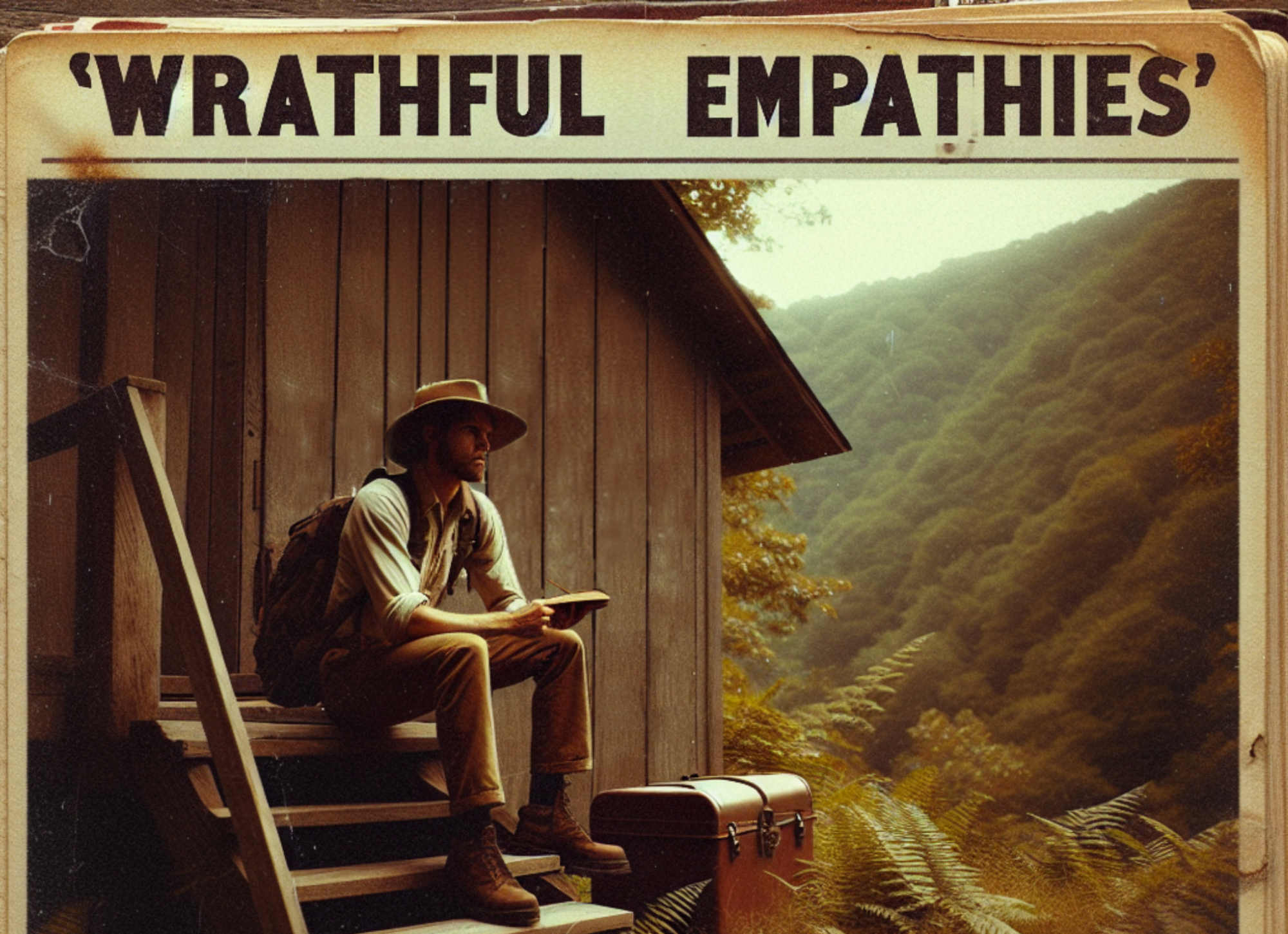I was inspired to write “Wrathful Empathies” by several key elements:
Harpers Ferry itself. This place sparks my imagination. Its unique geography and rich history, provides me with limitless content. My novel incorporates the setting of this historic town surrounded by craggy heights on all sides and John Brown’s bloody raid as a backdrop for the story.
The Appalachian Trail. My lifelong passion for hiking this footpath and experiencing its colorful thru hiking culture provides colorful context. The story revolves around the protagonist, DB Cooper, analyzing the journals collected from remote Adirondack style shelters sprinkled along the 2,100-mile trail spanning 40 years. Did you know that Harpers Ferry is not only the confluence of the Potomac and Shenendoah rivers but also the unofficial halfway point of the Appalachian Trail? It literally blazes its way through the cobble streets of the historic lower town.
Conspiracy Theories. Why do we believe everything we read in the history books? Sometimes it fun to imagine alternative narratives. This speculation has always fueled my imagination. It naturally led me to create a story about a person who discovers a conspiracy in plain sight. In my book, a college student starts his summer internship at the Great Trail HQ office with trepidation that he will be completely bored. Through his research, however, a mysterious underground group called “The Kindred” is uncovered. An enigmatic figure known as “Lost Mungo” appears from the pages of dusty journal entries. Weirdly, this person appears to never stop hiking and journaling on a daily basis along the 2,100-mile footpath as decades roll by. I personally experienced this form of communication as I hiked the entire Appalachian Trail from Georgia to Maine.
Historical Fiction. The blending of actual events with fictional characters opens up an entire alternative universe. For example, my novel traces survivors of John Brown’s first raid across time through succeeding generations to present time. I imagine a few souls were chosen to escape the final deadly showdown with Federal troops and escape into the surrounding mountains. Would they have ever stopped fighting for a just cause?
Time Travel. I love imagining what could happen if we were able to release the constraints of time and space. The character of Lost Mungo, who appears to communicate across decades without aging, was created to play with the possibilities of time and space in storytelling.
Tibetan Buddhism. After reading the Tibetan Book of Living and Dying, I imagined a story surrounding historical people, places and events set in Appalachia but with no limitations to the material World.
William Blake. His poem “America, A Prophecy is the background to the moral battle taking place. At the dawn of the American experiment in freedom, the practice of slavery jeopardized it all. What moral issue would cause people to take up arms against the Government in moder times? I decided to reimagine his poem set in the Blue Ridge mountains. This explains the names of many characters and the struggle between spiritualism and reason.

